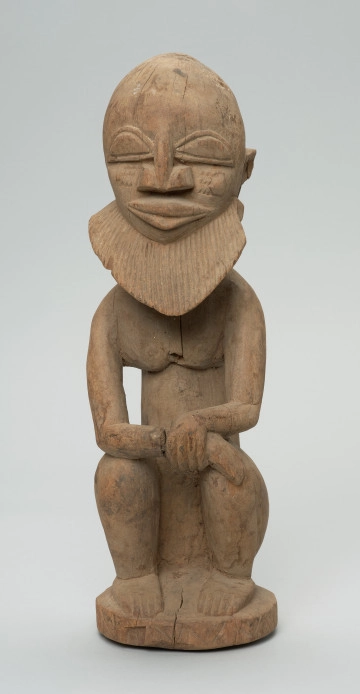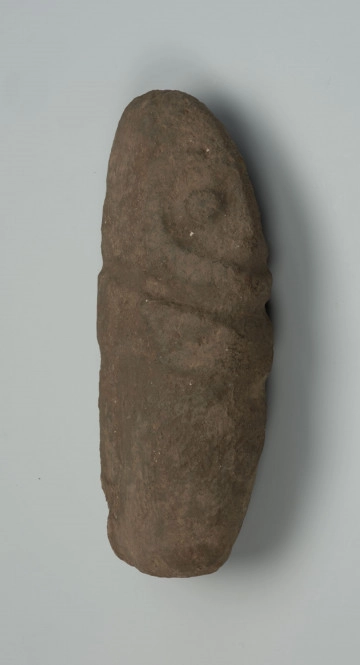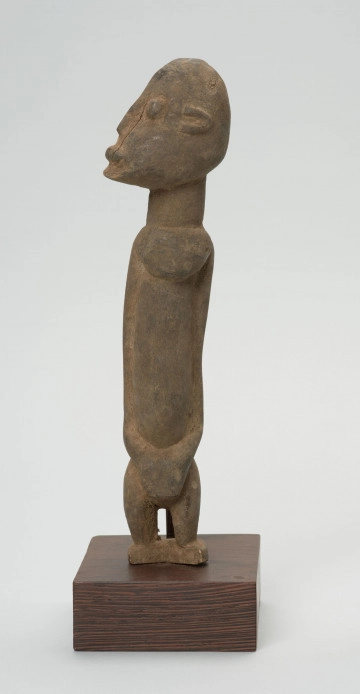
Figure - man
między 1951 — 2000
National Museum in Szczecin
Part of the collection: Collection of Dogonian art
Dogon art is created primarily for religious purposes. According to their mythology, the creator of the universe is the god Amma, but the inhabitants of the Bandiagara Escarpment pay little attention to him, concentrating instead on the various ancestors who are intermediaries between the living and the ultimate forces of the universe. Most of the Dogon rituals are associated with them. Among the ancestors, several categories can be distinguished. One of them is the first ancestors created by Amma - the four pairs of perfect twins from whom all humanity is descended. The next group, and the most numerous, is the deceased members of all the lineages called wagem, which translates literally as those who are far away. The last category are the various binu, or immortal ancestors, who lived in times before the appearance of death among the human race. Their name is an abbreviation for binu yay, which translates as gone and returned and means ancestors who went to the world of the dead but returned to help their descendants. Binu often make themselves known to their living relatives in the form of an animal that is the guardian of the lineage, a kind of totem. The priest of the cult dedicated to these ancestors is Binukedine. The sign of his function is duge - a small stone, a glass bead or an iron ring hung around his neck. Duge is a symbol of the alliance between binu ancestors and living relatives; through it the priest can communicate with the ancestors. Some ancestors from the group of those who have gone and returned are allied with the whole family, while others are bound by a special bond with only one person. Binu is a source of power and protection for his descendants, who ask him for prosperity, fertility, rain and an abundant harvest during the Bulo festival, or sowing ceremony, and during harvest rituals.
Ewa Prądzyńska
Author / creator
Dimensions
cały obiekt: height: 14 cm, width: 2,5 cm
Object type
figure
Creation time / dating
Creation / finding place
Identification number
Location / status

między 1951 — 2000
National Museum in Szczecin

między 1951 — 2000
National Museum in Szczecin

między 1951 — 2000
National Museum in Szczecin
DISCOVER this TOPIC
Museum of King Jan III's Palace at Wilanów
DISCOVER this PATH
Educational path